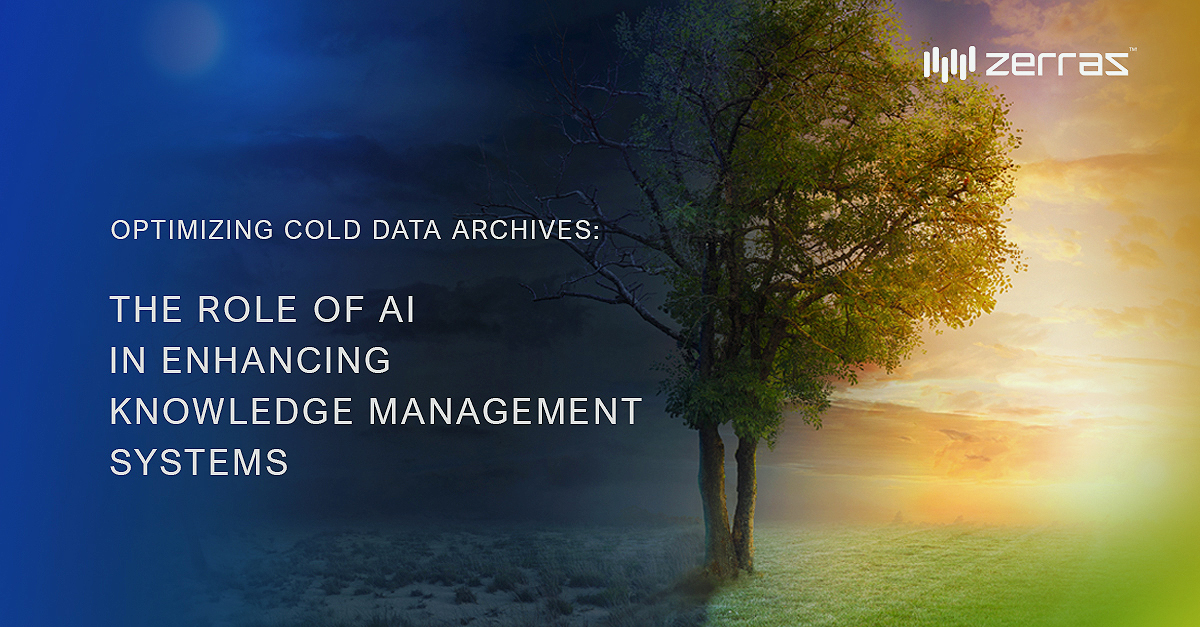The advent of Big Data has resulted in an exponential growth in the volume of data generated and collected by businesses. In fact, a significant proportion of the world’s data can be classified as ‘cold data’ — unstructured data that is infrequently accessed or used. Despite its infrequent use, this data often holds potential value that can be leveraged effectively with proper Knowledge Management (KM) systems and Artificial Intelligence (AI) techniques.
Knowledge Management and Long-Term Archival
Knowledge Management refers to the systematic management of an organization’s knowledge assets to create value and meet tactical & strategic requirements of its human capital. It involves the initiatives, processes, strategies, and systems that sustain and enhance the storage, assessment, sharing, refinement, and utilization of explicit and tacit knowledge. Modern and digital enterprises use KM to retain institutional knowledge, reskill competencies, promote employee engagement, and foster innovation. Studies have concluded that companies that effectively use KM systems can realize productivity improvements of up to 25%.
While long-term archival is a process that focuses on preserving data, documents, and other forms of knowledge for extended periods, the goal is to ensure that the stored unstructured information remains secure, accessible, and understandable for as long as needed. Modern and digital enterprises use long-term archival systems to prevent data loss, comply with regulations, and ensure data authenticity. Optical storage libraries are used to store cold master data assets, and backup systems focus on warm backup and data replication. In a report by Ontrack, hardware failures accounted for 40% of all data loss incidents.
Knowledge and archival systems often work hand-in-hand within an organization. Long-term archival systems serve as the ‘authentic repository’ component of a knowledge management system, whereas knowledge management processes leverage stored data to drive the value of knowledge and digital assets, disseminate it throughout the organization, and apply it in practical contexts.
Cold Data and AI
While human users might find sifting through cold unstructured data challenging, AI and Machine Learning (ML) techniques can efficiently extract value from this data. For instance, AI algorithms can clean, preprocess, and transform unstructured data into a format that can be fed into ML models for training. Advanced analytics tools and artificial intelligence can then derive insights from this data.
However, generative AI models such as GPT-4 cannot directly retrieve or analyze specific documents or databases. They generate responses based on patterns they learned during their training, and they do not have the ability to access or retrieve specific documents or databases. Instead, these models are trained on a diverse range of internet text and image sources. But they don’t know specifics about which documents were part of their training set, nor do they have the ability to access any external databases or specific documents. They generate responses based on patterns they learned during training. It’s both smart and dumb at the same time.
Integrating Unstructured Data into AI
Unstructured data, such as text documents, emails, images, and videos, often contain valuable information. But extracting this information and making it usable for ML can be a complex task due to the lack of clear organization and format of this data. Lots of work needs to be done to get the data into a pipeline that AI models can use to do its magic.
This includes the arduous tasks of data cleaning and preprocessing, feature extraction, data transformation, model training, and model evaluation and optimization. After the model has been trained, it can be deployed for use with continuous performance monitoring and retraining to ensure that it continues to perform well as new data comes in. This is why there is a shortage of machine learning data engineers and data scientists. These specialists will use AI/ML techniques for specific document retrieval and analysis which include Information Retrieval Systems, Named Entity Recognition (NER), Topic Modeling, Document Classification, Text Clustering, Semantic Search Engines, Question Answering Systems, Document Databases and NoSQL Databases, and Text Summarization. Depending on the purpose and context of the projects, other human specialists in cognitive science or subject matter experts may be involved to tune the accuracy and validity of the information.
In summary, while cold unstructured data may not be immediately useful on demand, it holds potential value that can be effectively harnessed with well-implemented knowledge management systems and the right AI and ML techniques. As we generate more and more data every day, managing and extracting value from cold data will become faster and less costly. It certainly will improve productivity levels as cold data is integrated with knowledge, archival storage and learning systems.

